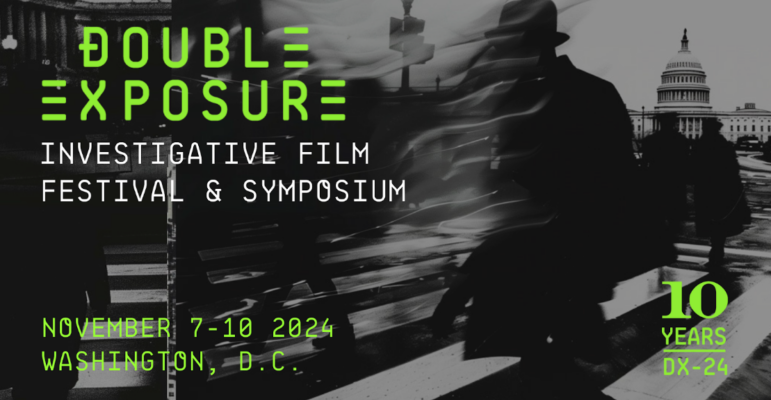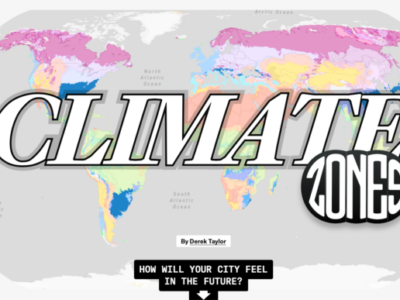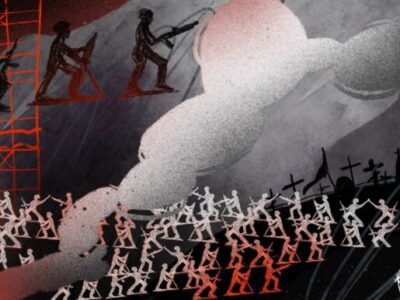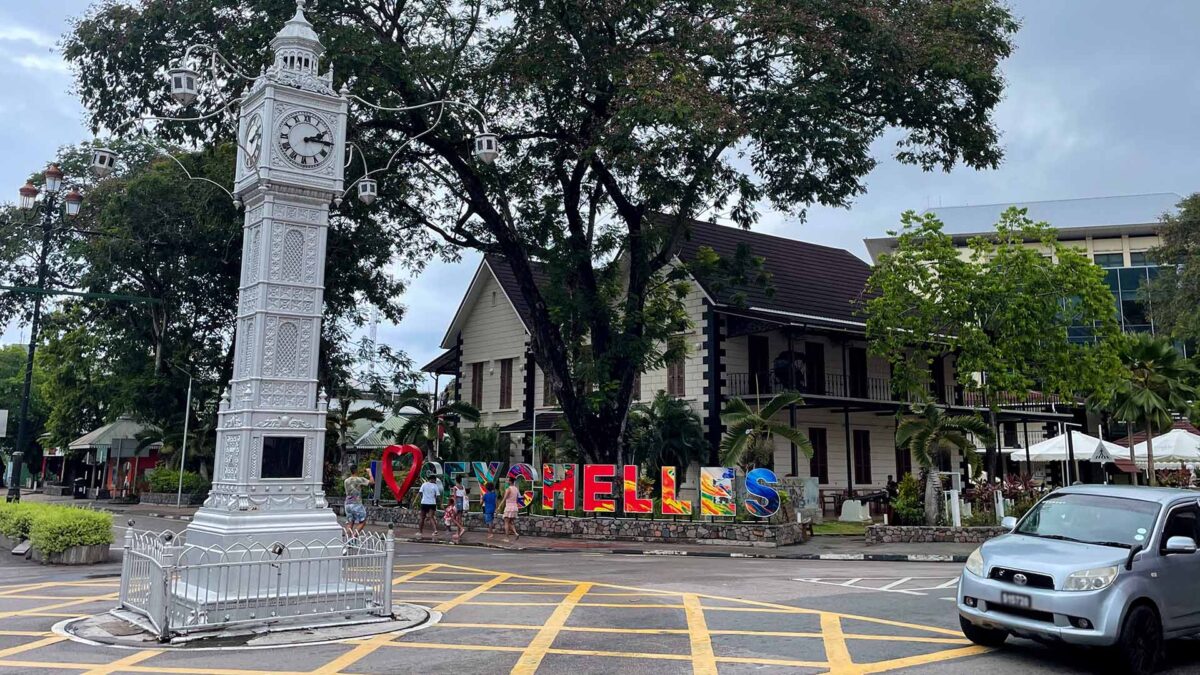
Presented by GIJN member 100Reporters, the four-day 2024 Double Exposure Film Festival & Symposium (Nov. 7-10) will showcase 23 feature-length and short-form documentaries that shine new narrative light on urgent topics within North America and beyond.
While DX festivals during the previous two years have collectively focused on themes such as declining democracy and growing authoritarianism, this year’s lineup features a highly diverse set of undercovered topics, such as prisoner abuse, under-recognized women scientists, and newly unearthed lessons from historic social justice fights.
GIJN highlights five notable documentaries that include innovative investigative approaches in the curated list below.
Searching for Amani
First, a simple project to collect interview vignettes from children in fragile environments around the world leads to a murder mystery in East Africa. Then, an investigation by filmmakers and a 13-year-old aspiring journalist into that murder mystery leads to the revelation of its ultimate culprit: climate change.
This hugely compelling documentary joins a personal quest by the teenage boy, Simon Ali, to investigate the death of his father, who was murdered while serving as a nature guide at a wildlife conservancy in Laikipia, Kenya. The project also offers a terrific example of how investigative documentaries can develop organically, when filmmakers allow themselves to follow the unexpected twists and talents that emerge.
For instance, while most children in the broader project pointed the cameras provided at themselves, the original director, Nicole Gormley, noticed that Ali instinctively pointed his camera outward — to document and ask questions. A natural journalist who looks to make a career in reporting, Ali’s own footage is captured in the film. And the translator in Kenya, Debra Aroko, emerged as so central to the story that she became a co-director.
The film eventually reveals the primary motive behind the murder of Ali’s father: the lethal tension between nature conservation and pastoralists feeling the economic and existential effects of climate change.
In a statement from both directors, they said: “Simon’s journey forced him to confront the realities of decisions made by people far removed from his world. That’s why we believe this is a film about climate change. It might not look like it at first because, instead of painting the issue in broad strokes, the film focuses on the microcosm of Simon’s life and his home in Laikipia, highlighting the often ignored intersectional nature of the effects of climate change.”
Homegrown
Is there more to the United States’ surging and increasingly violent ultra-nationalist movement than mindless hate and white supremacy?
Featuring behind-the-scenes video and footage from an embedded reporter, this film shows how three men — an Air Force veteran; a Latino conspiracy theorist; and a father-to-be electrician married to an Asian woman — leapfrogged normal political activism to take their fight for Donald Trump to the streets.
It kicks off with video of a Proud Boys militia member gearing up for confrontation the day before the January 6, 2021 insurrection at the US Capitol; a man who later received a 12-year prison sentence for his part in the violence on that day. However, the film also captures several unexpected pathways to radicalization. For instance, one man began his journey to a far-right militia after being inspired by the progressive “Fahrenheit 9/11” documentary, and, in one scene, is seen seeking common ground with a Black Lives Matter leader. This is one of numerous contradictions revealed within the characters’ chaotic worldviews, where shocking bigotry and a propensity for violence can somehow exist side-by-side with compassion for minorities and support for gay rights.
Director Michael Premo also underlines the documentary’s second surprise takeaway about the growing number of Black and Latino men among ultra-nationalists, by bravely and successfully embedding with these groups as a filmmaker of color.
“We set out to make an honest, no-judgment, study of the people heeding the clarion call of us-versus-them politics,” says Premo. “What we achieved is a visceral cinematic contribution to the discussion on the future of democracy.”
As The Washington Post points out in its review, the film succeeds partly because it adopts an important principle for far-right documentaries: it excludes the “spouting of misinformation” and rather focuses on the actions, choices, and feelings of individual subjects.
Projecting Protest
With so much scrutiny of disinformation, incitement, and privacy intrusion directed at social media, another fast-growing form of provocative communication around the world has been largely ignored by journalists: the sneak projection of giant messages onto private and public walls.
This short-format documentary investigates the trend of guerilla light projections, where protesters use recent improvements in projection technology to temporarily plaster public spaces with building-sized messages and claims. Some have said things like “Dissent is patriotic,” while others have projected giant swastikas and antisemitic messages — where a single counter-protester with a projector can viscerally “drown out” hundreds of pro-democracy protesters with light. Filmmaker Tom Clement shows how the phenomenon “blurs the line between free expression and property rights,” and is increasingly the source of legal challenges, conflict, and seemingly repressive new laws. This film shines a light on light itself, and includes video footage of disputes between protesters, property owners, and law enforcement in a largely unregulated area where the law is not always clear.
Men of War
This documentary offers an insider account of a little-known and disastrous coup attempt in Venezuela in May 2020 — an operation called Operation Gideon, but more derisively known as “The Bay of Piglets.” It also offers a useful insight into the hubris and delusion of private armies, and the consequences of foreign policy vacuums.
The story focuses on a decorated US Army Special Forces veteran — now living in exile in Mexico — who coordinated the amphibious incursion, which involved mercenaries and some Venezuelan exile and opposition groups. The failed assault resulted in eight deaths and dozens of arrests.
Filmmakers Jen Gatien and Billy Corben gather further evidence and testimony from an army general, a journalist, an exiled dissident, and a family member of one of the captured US mercenaries. Part of the film’s investigative value stems from the fact that there was remarkably little other media coverage of this fiasco, which took place at the height of the COVID-19 crisis, and amid numerous scandals within the Trump administration. Another useful takeaway is that there are well-trained and well-armed conspiracy theorists out there who believe that they can use violence to achieve “regime change” for lofty ideological ends as private citizens — and that there are deluded government agents who still find them useful.
The Strike
This documentary amplifies a light that prisoners themselves shone on a shocking issue within America’s corrections system: indefinite solitary confinement.
It unpacks an extraordinary grass roots operation that saw 30,000 prisoners in half of California’s state prisons coordinate a hunger strike to protest the practice of indefinite isolation, enabled by physical prison design. Drawing on testimony from hunger strikers, prison designers, and corrections officials, Mexican-American filmmaker JoeBill Muñoz investigates the policy creep and criminal justice history that led to this dehumanizing practice, and shows how dissent can work even in profoundly controlled environments. The feature-length documentary focuses on the practice, and the core strike, at the notorious Pelican Bay “supermax” prison in northern California, and jolts audiences into understanding the cruelty of one central experience for inmates: never-ending silence.
“We met the families of the hunger strikers, mostly women from Los Angeles who saw themselves as the voices of their brothers, fathers, uncles, and sons, and used every bit of their savings to make the 12-hour drive to Pelican Bay,” said Muñoz, in a joint statement with co-director Lucas Guilkey. “Finally, we met … men who had spent decades of their lives in a concrete tomb.”
They added: “’The Strike’ is an exploration of human resilience amid oppressive systems, inviting audiences to reflect, engage, and participate in the collective journey toward justice.”















